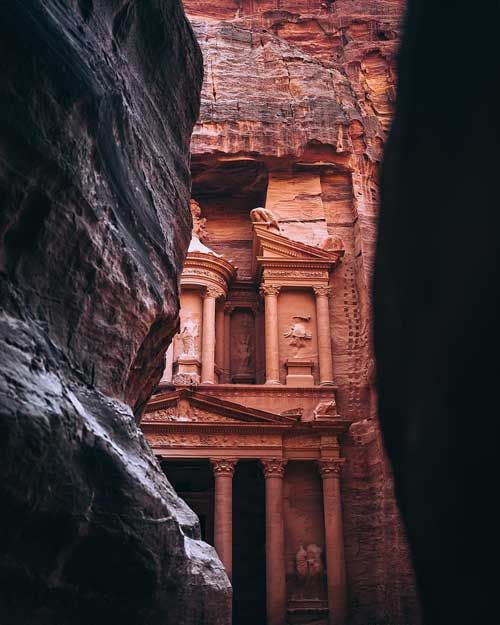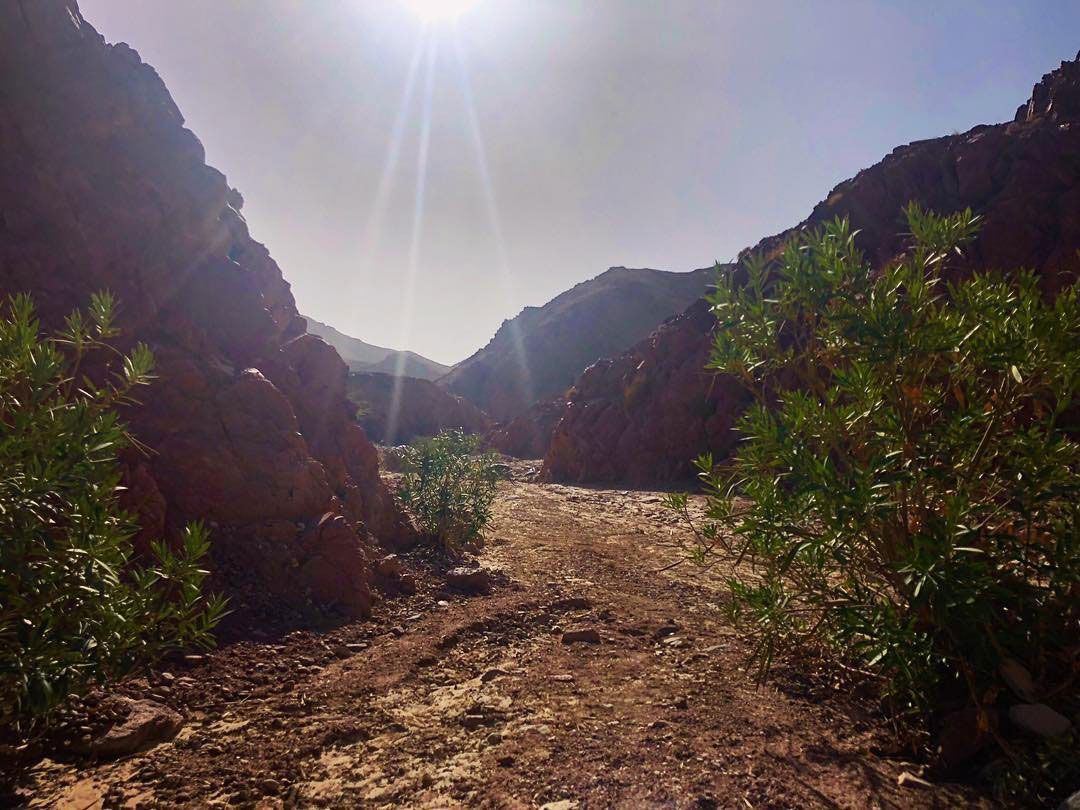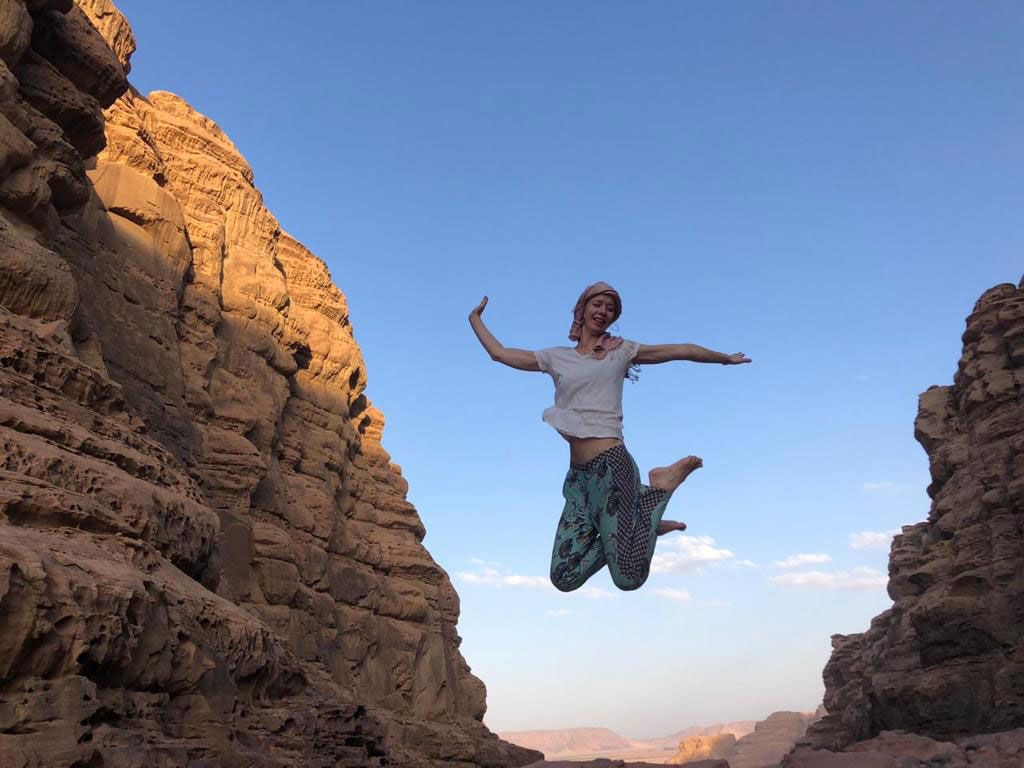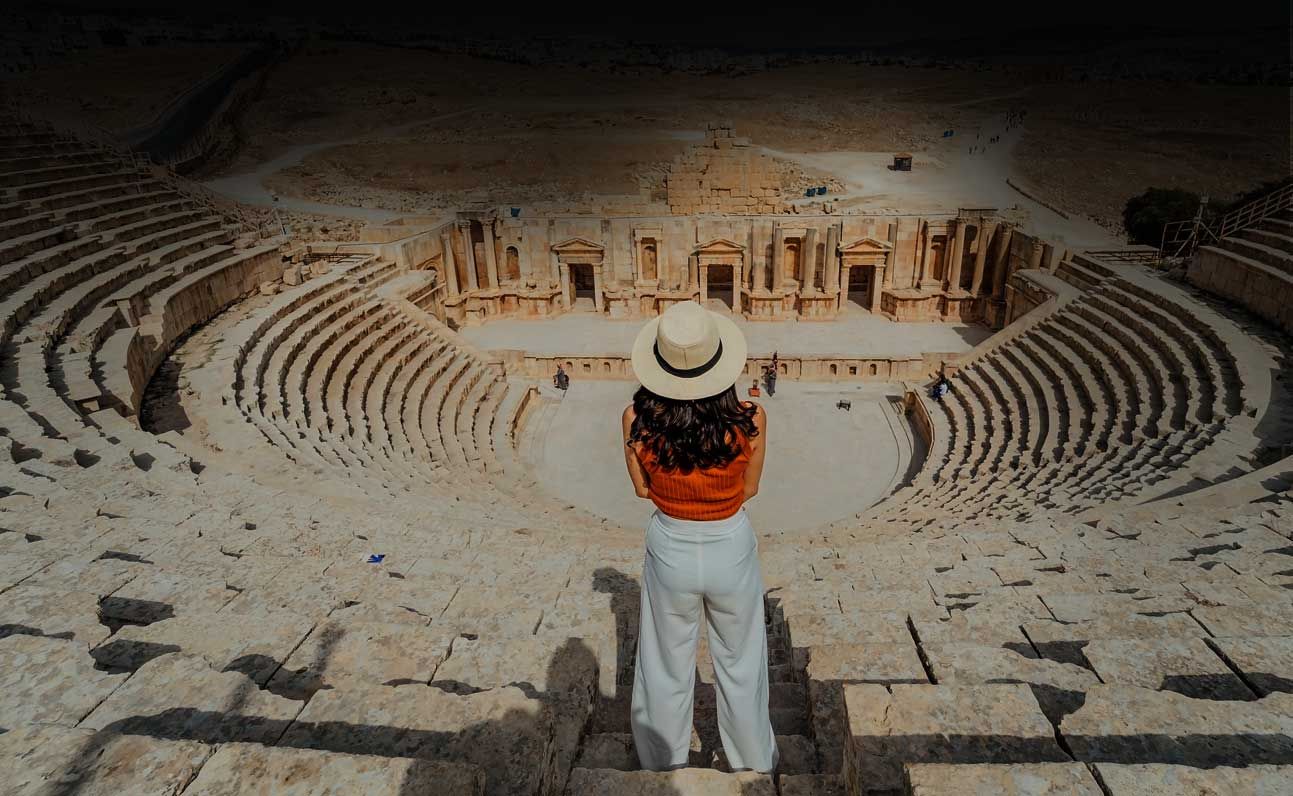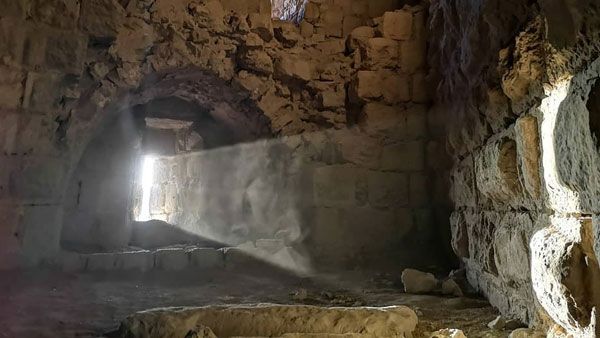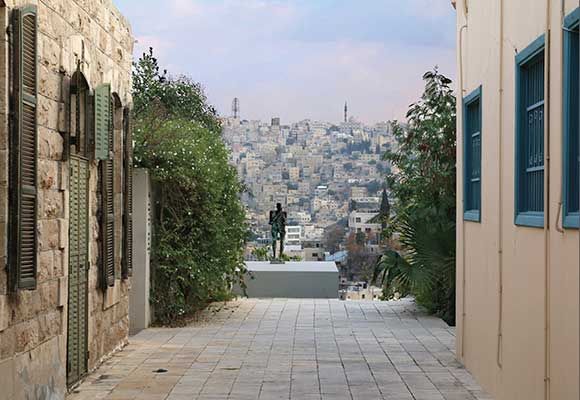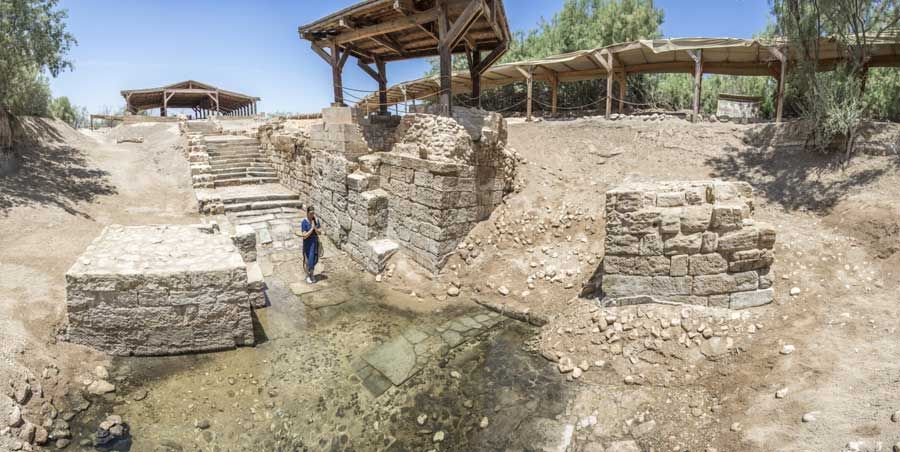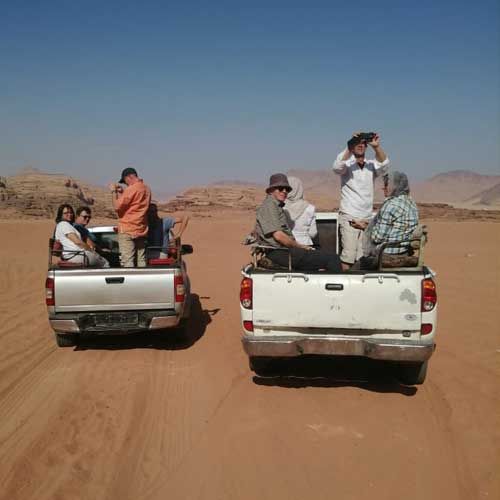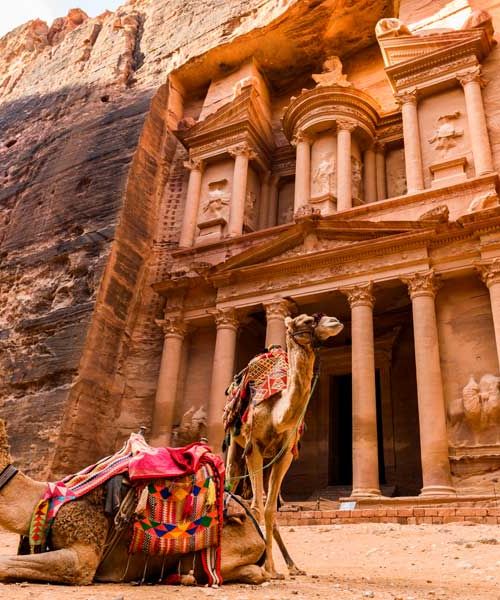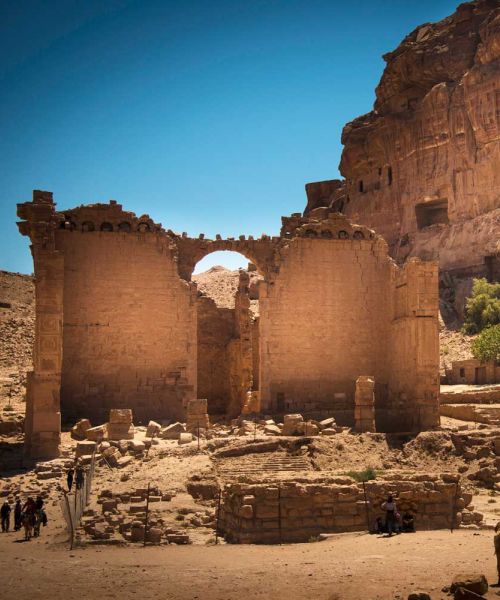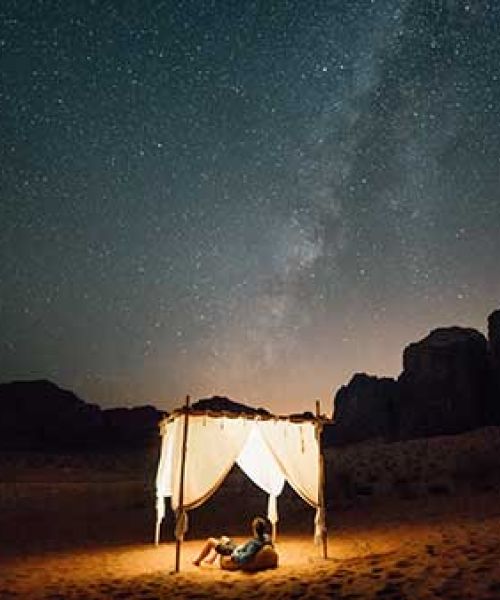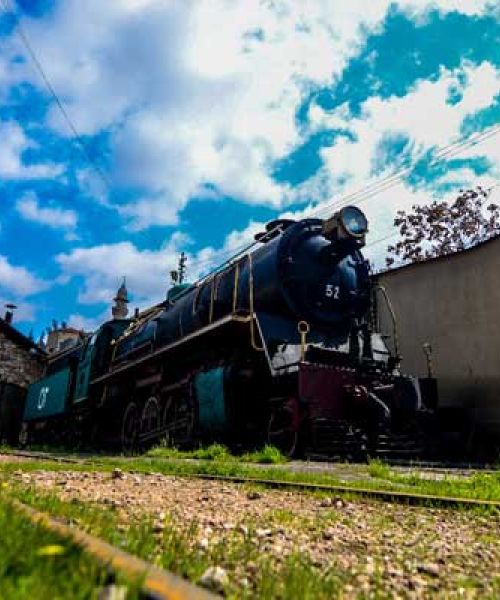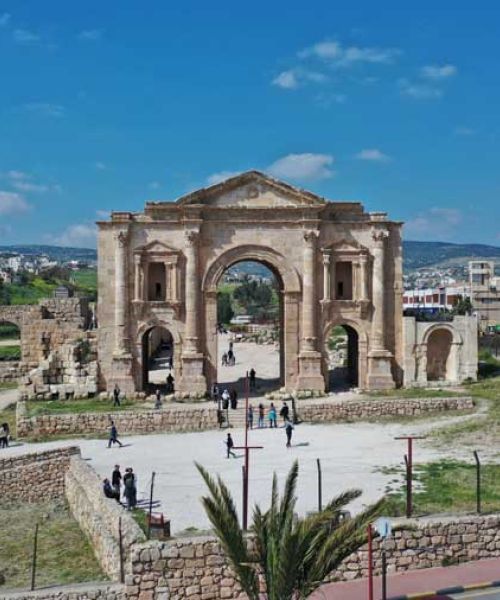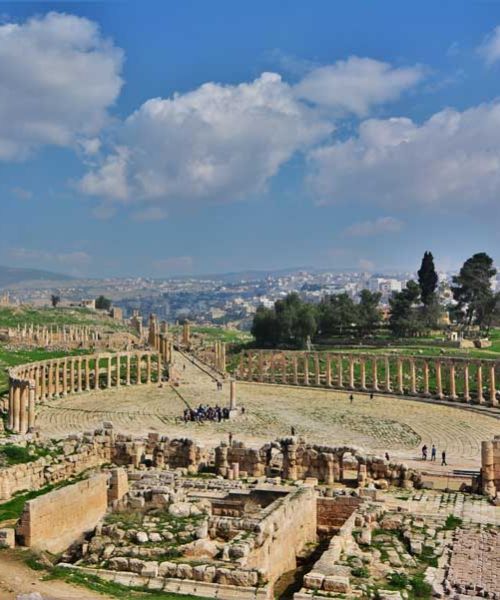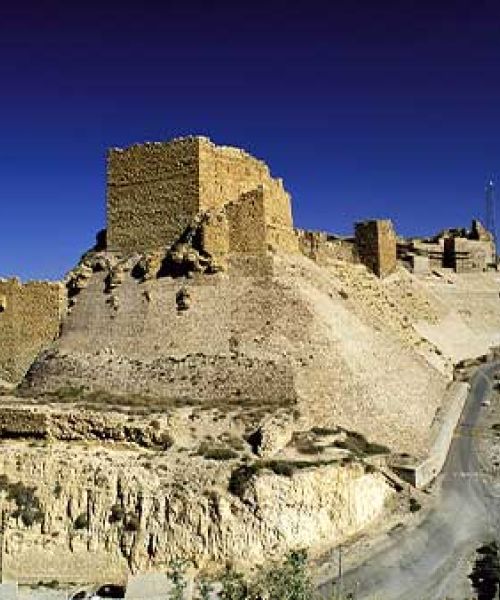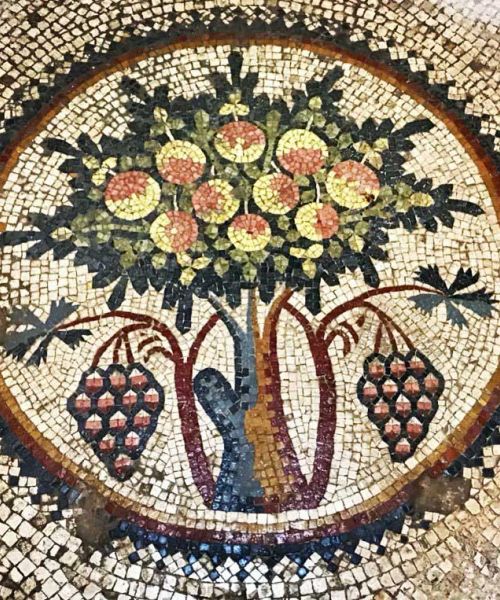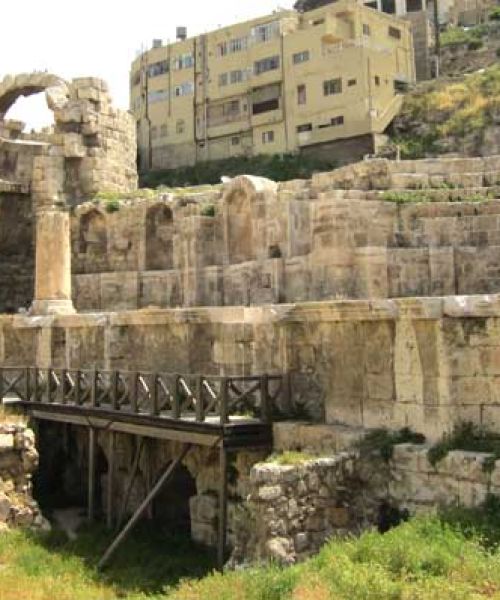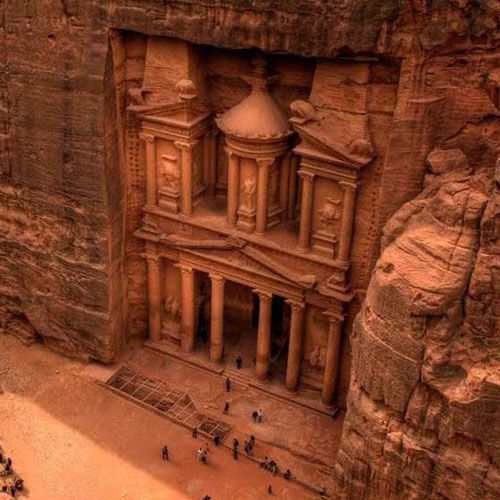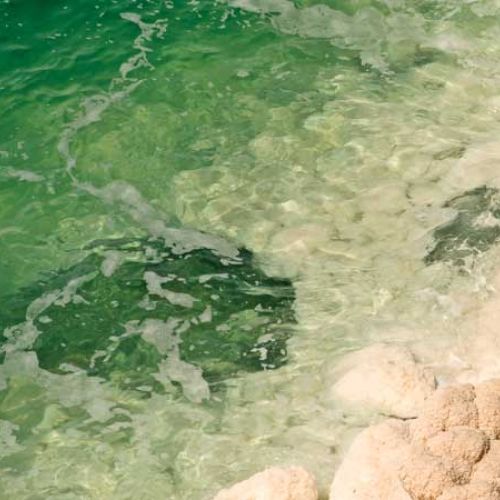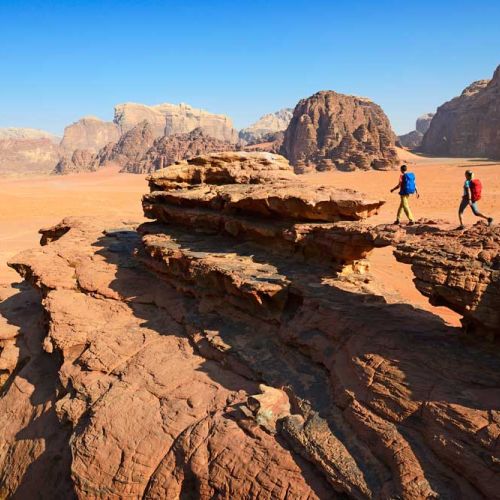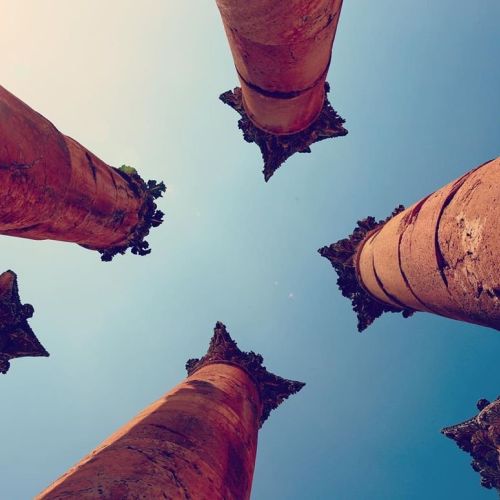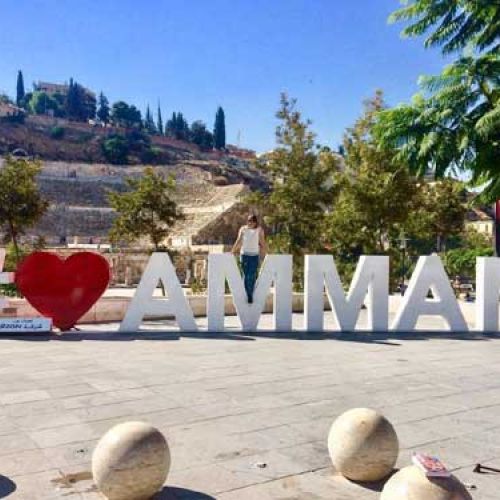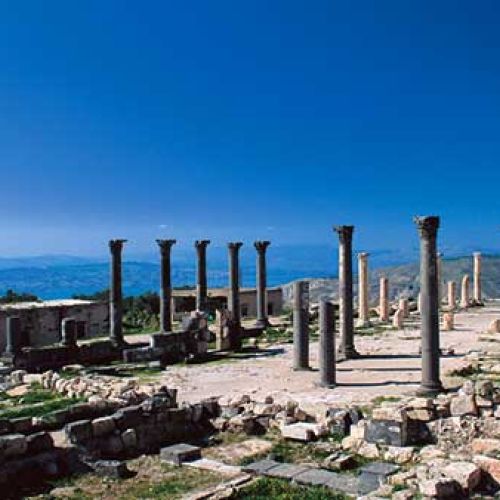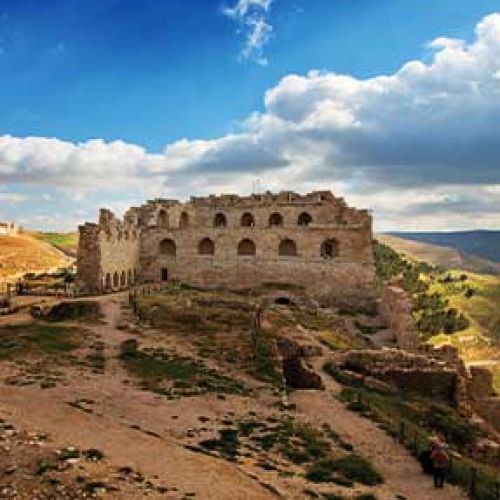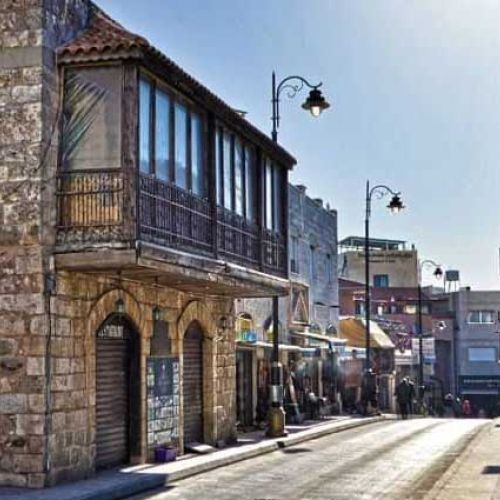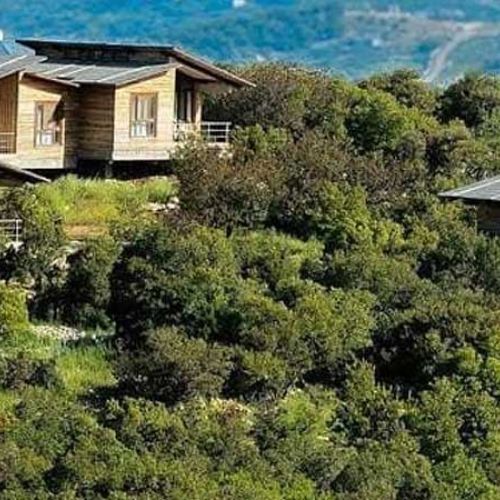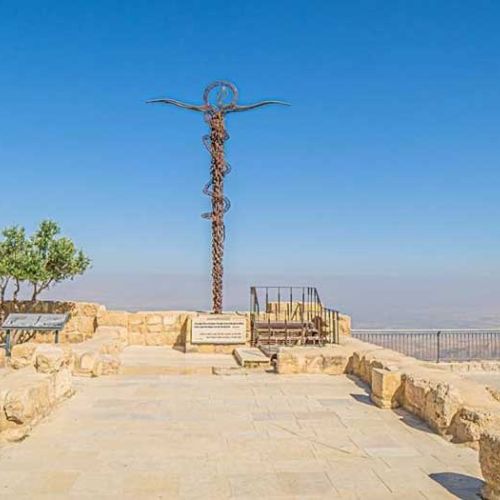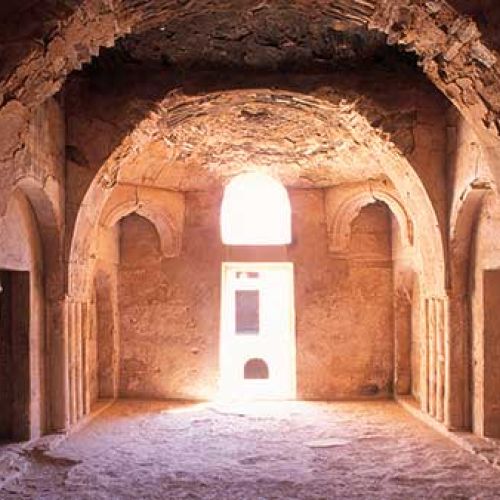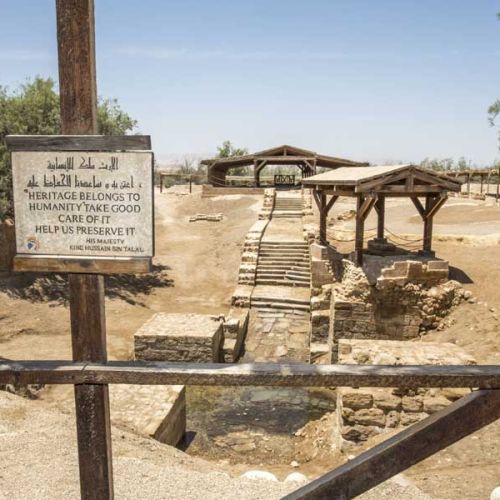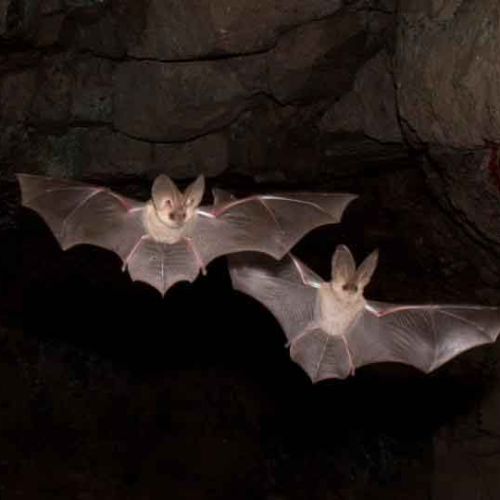Jordan
a captivating country that draw in travelers from across the globe
Jordan is located in the heart of the Middle East, Northwest of Saudi Arabia, South of Syria, Southwest of Iraq, and East of Israel and the Palestenian National Authority. Jordan has access to the Red Sea via the port city of Aqaba, located at the northern end of the Gulf of Aqaba.
Total: 89,213 sq. km (34, 445 sq. miles)
Land: 88,884 sq. km (34, 318 sq. miles)
Water: 329 sq. km (127 sq. miles
Population: 9,456 Million (2016)
Jordan has a combination of Mediterranean and arid desert climates, with Mediterranean prevailing in the North and West of the country, while the majority of the country is desert. Generally, the country has warm, dry summers and mild, wet winters, with annual average temperatures ranging from 12 to 25 C (54 to 77 F) and summertime highs reaching the 40 C (105-115 F) in the desert regions. Rainfall averages vary from 50 mm (1.97 inches) annually in the desert to 800 mm (31.5 inches) in the northern hills, some of which falls as snow in some years.
Jordan enjoys a range of geographical features, starting from the Jordan Rift Valley in the West ending at the desert plateau of the East, with a range of small hills running the length of the country in between. Lowest Point: Dead Sea, -408 meters (-1338.6 feet)Highest Point: Jebel Rum, 1734 meters (5689 feet)
The Hashemite Kingdom of Jordan, a place which once captivated ancient travelers, continues to enthrall a new generation with it’s eclectic mix of modernity and tradition
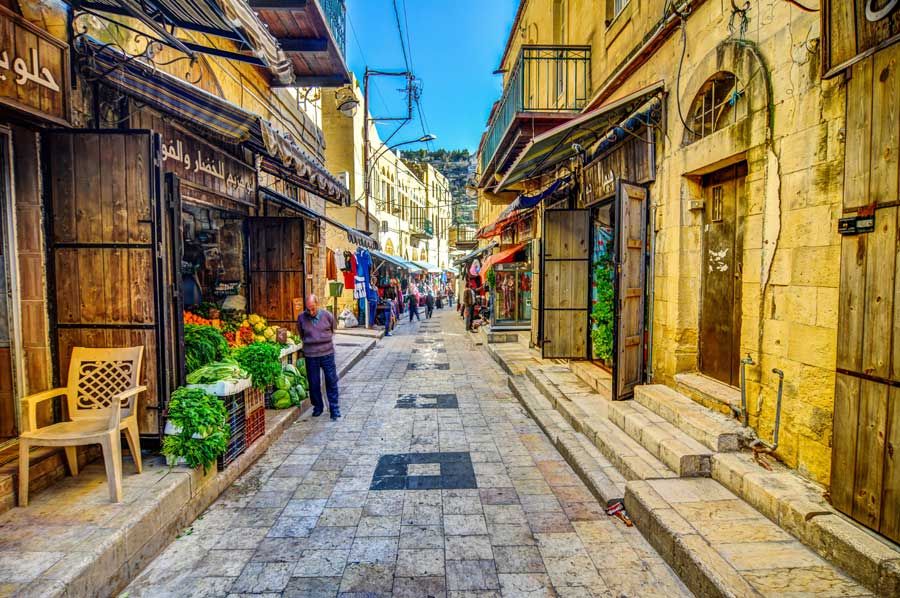
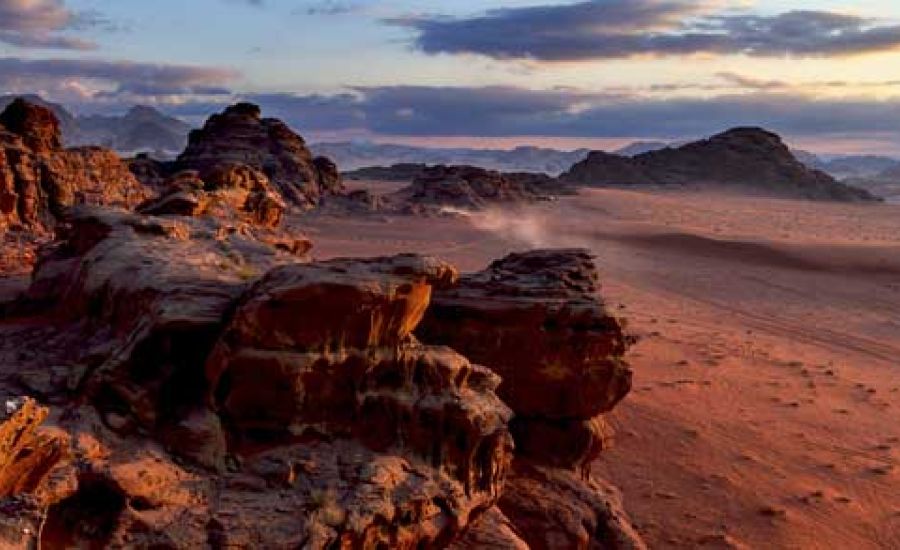
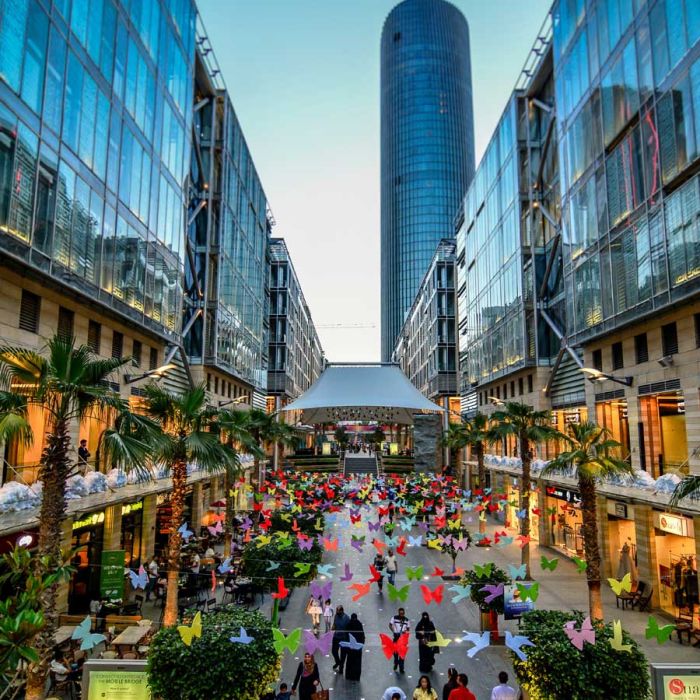
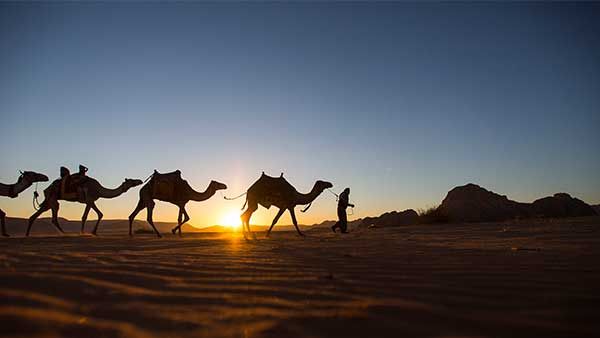
Jordan Travel always worth a trip
Jordan’s currency is the Jordanian Dinar, or JD. It is subdivided into 1000 fils, or 100 qirsh or piastres. It appears in paper notes of 50, 20, 10, 5 and 1 JD denominations. Coins come in denominations of 0.5 JD, 0.25 JD, and 100, 50, 25, 10 and 5 fils. The daily exchange rate is published in local newspapers.
Jordan has been home to many successive civilizations. Each group introduced new elements into the country’s religion, language, and architecture. Except for the Crusader period, Jordan has remained under Arab rule from the 7th century to the beginning of the 16th century, by which time the Turkish Ottoman Empire had expanded to include many Arab Middle Eastern countries.
The population represents a mixture of traditions. To be a Bedouin, or to come from Bedouin stock, is a matter of pride for many Jordanians. Bedouins are known as hospitable people of strong character, with a deep sense of family and tribal pride.
Jordan is a small Arab country with inadequate supplies of water and other natural resources such as oil. Debt, poverty, and unemployment are fundamental problems, but since assuming the throne in 1999 King Abdullah II has undertaken some broad economic reforms in a long-term effort to improve living standards.
Jordan's geographic location has played a pivotal role in shaping its history and cultural heritage. Situated between Israel, Saudi Arabia, Iraq, and Syria, Jordan occupies a strategic position in the region. Its borders stretch from the fertile Jordan Valley in the west to the arid desert landscapes of Wadi Rum in the east. This unique location has made Jordan a crossroads of civilizations throughout the centuries, attracting traders, explorers, and conquerors alike.
Jordan's physical geography is a tapestry of diverse landscapes. The country is blessed with breathtaking natural wonders that range from towering mountains to vast deserts. The historical city of Petra, with its rose-colored sandstone cliffs, lies hidden within the southwestern mountains, further enriching the country's remarkable geography. The Dead Sea, the lowest point on Earth, offers a surreal experience of floating effortlessly due to its high salt concentration. From the bustling capital city of Amman to the serene beaches of the Red Sea, Jordan's physical geography offers a wealth of experiences for every traveler.
Jordan is home to an array of natural landmarks and features that captivate the imagination. The Wadi Rum desert, also known as the Valley of the Moon, is a mesmerizing expanse of golden sand dunes, towering rock formations, and ancient inscriptions, offering a surreal experience of isolation and tranquility.
The Dana Biosphere Reserve, a UNESCO World Heritage Site, showcases the country's rich biodiversity with its diverse flora and fauna. The Mujib Nature Reserve, with its awe-inspiring canyons and waterfalls, provides opportunities for thrilling adventures like canyoning and hiking. These natural landmarks and features make Jordan a haven for nature enthusiasts and adventure seekers.
Jordan's geographic location has shaped its culture and history in profound ways. The country's position at the crossroads of ancient trade routes has made it a melting pot of civilizations, resulting in a rich and diverse cultural heritage. The Nabateans, Romans, Byzantines, and Arabs have all left their mark on Jordan, leaving behind architectural wonders, religious sites, and archaeological treasures. The historical city of Petra, a UNESCO World Heritage Site and one of the New Seven Wonders of the World, stands as a testament to the ingenuity and craftsmanship of the ancient Nabateans. Exploring Jordan's cultural heritage is like stepping back in time and unraveling the layers of history that have shaped the country.
Jordan's geographic diversity offers a wide range of tourism and travel opportunities. From exploring the ancient ruins of the Roman city of Jerash to floating in the buoyant waters of the Dead Sea, there is something for every type of traveler. The historical and archaeological sites, such as Mount Nebo and the Baptism Site, provide insights into Jordan's biblical past. Adventure seekers can embark on hiking trails in the Dana Biosphere Reserve or experience the thrill of a jeep safari in Wadi Rum. The vibrant capital city of Amman offers a blend of modernity and tradition, with its bustling markets, trendy cafes, and ancient ruins. Whether you're an history enthusiast, nature lover, or simply seeking a unique cultural experience, Jordan has it all.
Jordan Travel and IMF
Jordan in the past three years has worked closely with the IMF, practiced careful monetary policy, and made significant headway with privatization. The government also has liberalized the trade regime sufficiently to secure Jordan’s membership in the WTO (2000), an association agreement with the EU (2001), and a free trade agreement with US (2000). These measures have helped improve productivity and have put Jordan on the foreign investment map. The U.S. led war in Iraq in 2003 negatively impacted Jordan’s economy, given Jordan’s extensive trade relations with Iraq and dependence on Iraq for discounted oil (worth $300-$600 million per year). Several Gulf nations, as well as the United States, have provided temporary aid to overcome those challenges. Other ongoing challenges include fiscal adjustment to reduce the budget deficit, broader investment incentives to promote job-creating ventures, and the encouragement of tourism.

